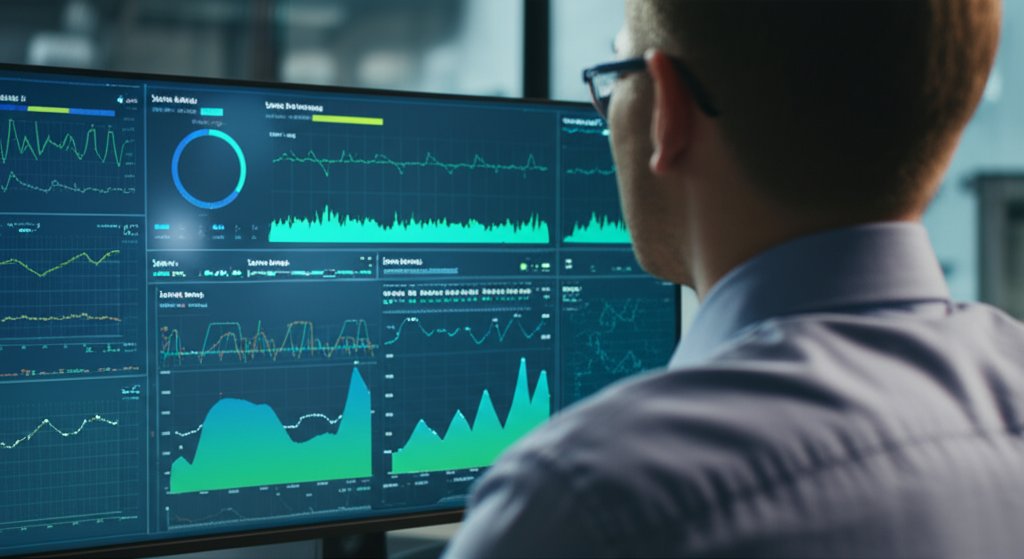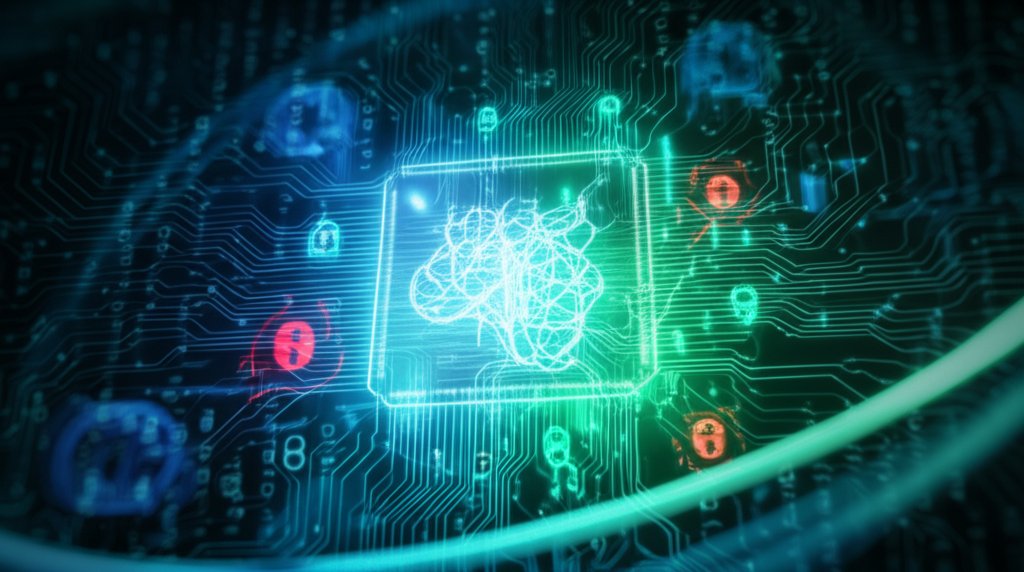In an age where digital threats evolve at an alarming pace, simply reacting to cyber attacks is no longer enough. Your valuable data, your business continuity, and your peace of mind are constantly targeted by sophisticated adversaries. Consider this: over 50% of small businesses experience a cyber attack annually, with many breaches remaining undetected for months. This reality demands a shift from passive defense to proactive vigilance.
What if you could actively seek out and neutralize threats before they inflict damage? This is the core promise of threat hunting, a practice once exclusive to large enterprises. Thanks to Artificial Intelligence (AI), advanced threat hunting is now within reach for every individual and small business. This comprehensive guide will empower you to take control of your online security with AI, transforming you from a potential victim into a digital detective, even if you’re a complete beginner.
What You’ll Learn
In this comprehensive guide, we’re going to demystify AI-powered threat hunting for you. We’ll cover:
- Why traditional security methods are falling short.
- What threat hunting truly means, simplified for beginners.
- How AI transforms threat hunting, making it accessible and powerful.
- Practical steps you can take today to leverage AI for your online security, whether you’re an individual or a small business.
- How to choose the right AI cybersecurity solutions for your specific needs.
- Common myths about AI in security and why human oversight remains crucial.
Prerequisites
You don’t need to be a cybersecurity expert or a data scientist to follow along. All you really need is:
- Basic computer literacy and understanding of internet usage.
- An existing awareness of common online threats (like phishing or malware).
- A willingness to learn and embrace proactive security practices.
Time Estimate & Difficulty Level
- Estimated Time: 25-35 minutes for a thorough read and comprehension.
- Difficulty Level: Beginner-Friendly. We’ll break down complex concepts into easy-to-understand language.
The Evolving Threat Landscape: Why Traditional Security Isn’t Enough
Remember the good old days when an antivirus program and a firewall felt like enough? Well, things have shifted dramatically. Today’s cyber threats aren’t just about simple viruses; they’re sophisticated, multi-pronged attacks designed to bypass those initial defenses. Small businesses, in particular, are juicy targets because they often lack the robust security teams and budgets of larger corporations.
Traditional, reactive security often relies on signature-based detection. Think of it like a police officer recognizing a known criminal from a wanted poster. It works for known threats, but what about the brand-new ones? The ones nobody’s seen before? Waiting for an attack to happen and then trying to clean up the mess is a costly and often damaging approach. We need to move beyond just responding to alarms; we need proactive security that helps prevent those alarms from ever going off.
What is Threat Hunting? (Simplified for Beginners)
So, what exactly is threat hunting? In simple terms, it’s about actively searching for threats that have managed to sneak past your initial defenses, rather than just passively waiting for an alert from your security tools. Imagine you’re a detective, not just a security guard waiting for an alarm bell. You’re proactively looking for hidden clues, suspicious patterns, or unusual behaviors that might indicate an intruder has made it inside, even if they haven’t set off any alarms yet.
For small businesses and everyday users, this proactive approach matters immensely. Early detection minimizes damage, reduces recovery costs, and protects your valuable data and reputation. It’s the difference between finding a small leak and preventing a flood.
The AI Advantage: How Artificial Intelligence Transforms Threat Hunting
This is where AI truly shines, democratizing threat hunting for everyone. You see, these sophisticated threats often leave subtle traces – tiny anomalies in vast amounts of data. Humans simply can’t process that volume fast enough, or accurately enough, on their own. That’s where AI becomes our indispensable partner.
Processing Power: Analyzing the Digital Ocean
AI’s ability to analyze vast amounts of data – network traffic, user activity logs, system events, email patterns – at speeds humans can’t possibly match is revolutionary. It’s like giving that detective super-speed reading abilities for every single document in a massive library, all at once.
Pattern Recognition & Anomaly Detection: Finding the Needle in the Haystack
One of AI’s core strengths is its capability to establish a “normal” baseline for your systems and users. It learns what typical behavior looks like. Then, it meticulously sifts through data to flag anything that deviates from this norm – an unusual login time, an unexpected file access, a sudden surge in network traffic to a suspicious destination. These anomalies often signal a potential threat.
Detecting the Undetectable: Zero-Day Threats and New Attack Patterns
This is critical. By focusing on behavior and anomalies, AI can often identify “zero-day” threats – attacks that are so new, no traditional signature-based security system has seen them before. It’s like that detective spotting a new kind of criminal behavior even before it’s been classified. AI can help us harness the power of identifying these novel threats.
Predictive Analytics: Anticipating the Next Move
Beyond detection, AI can learn from past incidents and identified attack patterns to anticipate future ones. It’s not just reacting to what’s happening now; it’s using that knowledge to predict what might happen next, allowing you to strengthen defenses proactively.
Automation: Reducing Alert Fatigue
For security teams (and even individuals trying to manage their own security), the sheer volume of alerts can be overwhelming, leading to “alert fatigue” where real threats get missed. AI can automate the sifting, prioritizing, and even initial response to many threats, freeing up human attention for the most critical incidents.
Practical AI-Powered Threat Hunting for Everyday Users & Small Businesses
You might be thinking, “This sounds great, but I’m not running a data center. How does this apply to me?” The good news is, you’re likely already benefiting from AI, and there are straightforward ways to enhance your security further.
Step 1: Leveraging Existing AI-Driven Security Tools
You’re probably using some AI already without even realizing it. Our first step is to recognize and optimize these tools.
Instructions:
- Review Your Antivirus/Anti-malware: Most modern antivirus solutions (like Microsoft Defender, Avast, Malwarebytes, etc.) now incorporate AI and machine learning for behavioral detection. Ensure these features are enabled and your software is always up-to-date. This goes beyond just recognizing known malware; it watches for suspicious actions.
- Examine Email Security Services: If you use Gmail, Outlook, or a business email provider, their spam and phishing filters are heavily reliant on AI. Learn to identify and report suspicious emails to help train these systems further.
- Check Cloud Service Security Features: Are you using Google Drive, Microsoft 365, Dropbox, or other cloud services? Many offer AI-driven security features like suspicious login alerts (e.g., “login from a new location”), automated threat detection in shared files, and data loss prevention. Familiarize yourself with these settings in your account security dashboards.
Expected Outcome: A better understanding of how your current tools utilize AI, and confidence that you’re maximizing their built-in proactive capabilities.
Step 2: Understanding AI-Powered Security Services
For small businesses, especially, the world of dedicated AI security services can seem daunting. Let’s simplify what to look for.
Instructions:
- Explore Managed Detection and Response (MDR) Services: For small businesses that don’t have a dedicated security team, MDR services are a game-changer. These providers utilize AI and human analysts to continuously monitor your systems, detect threats, and respond on your behalf. They’re essentially your outsourced, AI-enhanced security team.
- Identify Key Features in SMB-Focused AI Security Solutions: When evaluating tools, look for:
- Real-time Monitoring: Continuous oversight of your endpoints, network, and cloud.
- Network Monitoring: Basic visibility into unusual network traffic, especially for small offices.
- Automated Response: The ability to automatically block known threats or isolate compromised devices.
- Behavioral Analysis: Not just signature matching, but deep analysis of user and system behavior.
- Ease of Use: A user-friendly dashboard and clear, actionable alerts for non-experts.
Expected Outcome: A clearer picture of the types of AI-driven security services available and the key features that offer the most value for small businesses without requiring in-depth technical knowledge.
Step 3: Simple “Threat Hunting” Practices You Can Adopt
Even without enterprise-grade tools, you can adopt a threat-hunting mindset using AI-powered insights.
Instructions:
- Regularly Review Security Logs (Where Accessible): Your antivirus software, firewall, and even router might provide logs of blocked activity, unusual connections, or failed login attempts. While AI processes this constantly, a quick periodic review can sometimes reveal patterns the AI hasn’t prioritized yet, or simply reinforce your understanding.
- Investigate Unusual Digital Behavior: If your AI-powered email filter flags an email as suspicious, don’t just delete it; take a moment to understand why. Is it the sender, the links, the attachments? Similarly, if your cloud service alerts you to a login from an unfamiliar location, investigate it immediately.
- Trust Your Gut (and AI’s Gut!): AI surfaces the anomalies, but your human intuition plays a vital role. If something feels “off” online – a pop-up, a slow website, an odd request – consider it a potential lead for your internal “threat hunt.” Use your AI tools to scan and verify.
Expected Outcome: You’ll develop a more proactive, investigative mindset towards your digital security, leveraging AI’s detections to inform your actions.
Choosing the Right AI Cybersecurity Solution for Your Needs
Selecting the right tools is crucial, and it doesn’t have to break the bank or overwhelm you.
- Assess Your Budget and Technical Comfort: How much can you realistically spend? How much time and expertise do you have in-house for managing security? This will guide you towards simpler, more automated solutions versus those requiring more configuration.
- Prioritize Key Features for SMBs:
- Endpoint Protection (EPP/EDR): AI-powered protection for all your devices (laptops, phones, servers).
- Email Security: Advanced AI-driven phishing and spam detection.
- Network Monitoring: Basic visibility into unusual network traffic, especially for small offices.
- Consider Integration and Scalability: Can the solution integrate with your existing tools? Can it grow as your business grows?
Tip: Look at providers like Microsoft Defender for Business (often included with Microsoft 365 subscriptions), CrowdStrike Falcon Go (designed for SMBs), SentinelOne, or even services offering AI-boosted Managed Detection and Response (MDR) as mentioned. These are often easier to deploy and manage than enterprise-level systems.
Expected Outcome: You’ll be better equipped to evaluate and select AI cybersecurity solutions that genuinely meet your needs without overcomplicating things.
Debunking Myths: What AI Threat Hunting Isn’t
It’s easy to get carried away with the hype around AI. Let’s set the record straight.
- AI isn’t a silver bullet; human oversight is still crucial. AI is a powerful assistant, but it lacks human intuition, context, and ethical reasoning. It needs human experts (or informed users) to interpret its findings and make final decisions.
- AI can be exploited by attackers too – the “AI arms race.” Just as we use AI for defense, attackers are using it for offense. It’s a continuous, evolving battle.
- It doesn’t require you to become a data scientist. While the underlying technology is complex, the goal of user-friendly AI security tools is to make the benefits accessible to everyone, not just AI specialists. You need to understand the outcomes and actions, not the algorithms.
Taking the Next Step: Enhancing Your Proactive Security Posture
Building a robust AI threat hunting capability is a journey, not a destination. Here’s how you can continue to strengthen your defenses:
- Continuous Learning: Stay informed about new threats and security best practices. The digital landscape never stands still, and neither should your knowledge.
- Employee Security Awareness Training: For small businesses, your employees are your first line of defense. AI can help identify phishing attempts, but a well-trained human can often spot the subtle social engineering tricks.
- Foundational Security Practices: Remember that AI enhances, it doesn’t replace. Continue with strong password practices, multi-factor authentication, regular software updates, and secure backups.
- Embrace a Security-Conscious Mindset: Cultivate a culture where digital security is a shared responsibility, emphasizing ethical behavior and responsible data handling.
Conclusion: Embrace AI for a Safer Digital Future
The world of cybersecurity can feel overwhelming, but AI offers a powerful ally for individuals and small businesses seeking to reclaim control. By understanding what threat hunting is and how AI empowers us to be proactive detectives rather than reactive victims, you’re taking a significant step towards a safer digital future.
You don’t need to be a tech wizard to leverage AI for better security. Start by exploring the AI capabilities already present in your everyday tools, then consider accessible, AI-driven solutions tailored for small businesses. Remember, AI is your partner, enhancing your ability to spot threats early and protect what matters most. Embrace AI, and you’ll be well on your way to bolstering your proactive online security.
To further sharpen your skills and understanding in a controlled environment, consider platforms like TryHackMe or HackTheBox for legal, practical experience.



